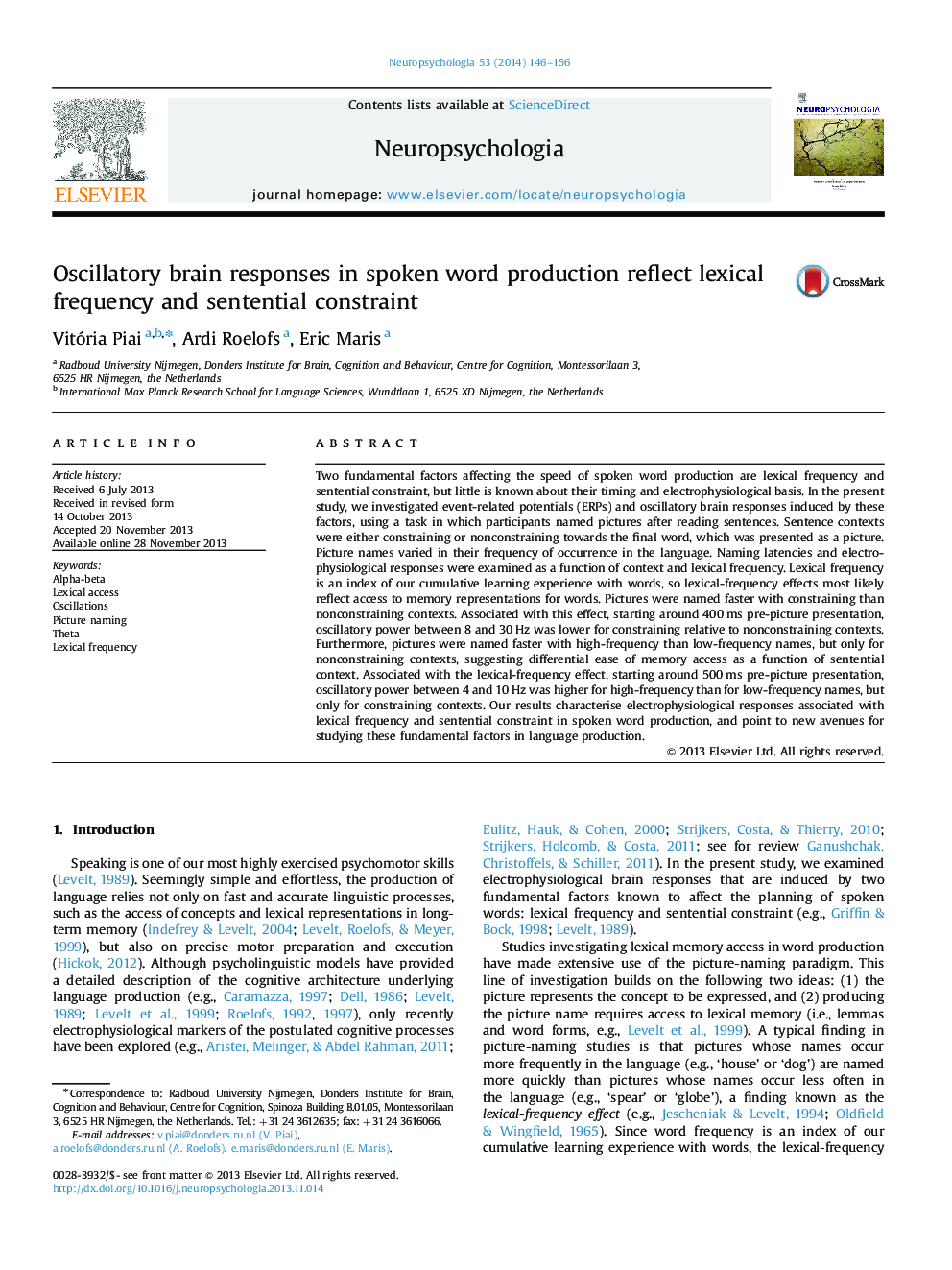| Article ID | Journal | Published Year | Pages | File Type |
|---|---|---|---|---|
| 7321962 | Neuropsychologia | 2014 | 11 Pages |
Abstract
Two fundamental factors affecting the speed of spoken word production are lexical frequency and sentential constraint, but little is known about their timing and electrophysiological basis. In the present study, we investigated event-related potentials (ERPs) and oscillatory brain responses induced by these factors, using a task in which participants named pictures after reading sentences. Sentence contexts were either constraining or nonconstraining towards the final word, which was presented as a picture. Picture names varied in their frequency of occurrence in the language. Naming latencies and electrophysiological responses were examined as a function of context and lexical frequency. Lexical frequency is an index of our cumulative learning experience with words, so lexical-frequency effects most likely reflect access to memory representations for words. Pictures were named faster with constraining than nonconstraining contexts. Associated with this effect, starting around 400Â ms pre-picture presentation, oscillatory power between 8 and 30Â Hz was lower for constraining relative to nonconstraining contexts. Furthermore, pictures were named faster with high-frequency than low-frequency names, but only for nonconstraining contexts, suggesting differential ease of memory access as a function of sentential context. Associated with the lexical-frequency effect, starting around 500Â ms pre-picture presentation, oscillatory power between 4 and 10Â Hz was higher for high-frequency than for low-frequency names, but only for constraining contexts. Our results characterise electrophysiological responses associated with lexical frequency and sentential constraint in spoken word production, and point to new avenues for studying these fundamental factors in language production.
Related Topics
Life Sciences
Neuroscience
Behavioral Neuroscience
Authors
Vitória Piai, Ardi Roelofs, Eric Maris,
